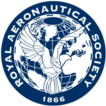Exclusive interview with Captain Eric ‘Winkle’ Brown – WW2 aviator, one of the world’s greatest test pilots and holder of the record for number of different aircraft types flown.
In November 1945 a unique collection of aircraft went on display at RAE Farnborough – the UK’s then ultra-secret aviation research and test airbase. The exhibition consisted of captured axis aircraft from WW2.
These Luftwaffe aircraft ranged from aircraft that had mistakenly landed or been forced down early in the war, to the most exotic jet and rocket designs such as the Me262 and Me163 – that the allies had hoovered up in the wake of Berlin’s surrender.
One of the key people in acquiring these aircraft and testing them to evaluate their performance was Captain Eric ‘Winkle’ Brown CBE, DSC, AFC, RN, Hon FRAeS who, in 1945 was CO of the Captured Enemy Aircraft Flight at Farnborough.
A former naval aviator he now ranks as one of aviation’s legends, and has more types in his logbook (487) than anyone else (this is more amazing when you discover he counts ‘Spitfire’ as one type – rather than the 24 marks of the aircraft that encompass the Merlin-powered variants to the Griffon-engined later models). He also holds the world record for number of carrier take-offs and landings and was the first pilot to land a twin-engined aircraft and jet fighter on an aircraft carrier. He also was the only allied pilot to fly the rocket powered Me163 Komet under power. He therefore has a strong claim to be, not just Britain’s, but the world’s greatest test pilot – since it is clear that these aviation records are unlikely to be matched.
He has also written a number of books, Wings on my Sleeve, Wings of the Weird and Wonderful and Wings of the Luftwaffe (now reissued).
As a fluent German speaker, he also interrogated many leading German aerospace figures after the surrender, such as Hermann Goering, Kurt Tank, Willy Messerschmitt and Hanna Reitsch. A former President of the Royal Aeronautical Society, he is still active on the lecture circuit as a distinguished speaker and author.
To commemorate this 1945 exhibition of captured Luftwaffe aircraft (which incredibly also included a flying display – as Captain Brown explains in the video) the Farnborough Air Sciences Trust (FAST) Museum at Farnborough on 26 August launched a special exhibition with rare photographs and artefacts from that 1945 ‘spoils of victory’ exhibition with Captain Brown as the special guest.
We took this opportunity to interview Captain Brown about this special RAE exhibition, his flying career, his advice for those seeking a career in aerospace and the value of being a member of the Royal Aeronautical Society (video interview in two parts due to length).
Captain Eric ‘Winkle’ Brown - test pilot legend (part 1)
Captain Eric ‘Winkle’ Brown - test pilot legend (Part2)
Among the items on display are a programme, unique photographs and also formerly classified reports that Captain Brown and others helped write as they combed occupied Germany for secret aerospace technology.
Most are extremely interesting – but some are astounding. For example a photo shows a FW190 being torn to pieces (almost literally) by hand by men, women and children as it was deemed surplus and was going to be junked anyway.
Another is a secret report on a delta-winged German fighter that incredibly, was designed to be powered by coal – showing the German desperation and ingenuity at that part of the war.
The exhibition, showcasing the Luftwaffe aircraft (a collection of scale models shows all of the types at RAE Farnborough in their accurate captured Air Ministry colours and serials) is a fascinating look at the range of aircraft that Captain Brown and his colleagues tested – without proper manuals and with the threat of sabotage hanging over them. In assessing these aircraft, finding their weaknesses and imparting that knowledge, Captain Brown and his fellow pilots played a vital role in Britain’s war effort.
The exhibition is on at the FAST Museum Farnborough and open every weekend through to November.
from the Royal Aeronautical Society
Do more:
REQUEST: a subscription to Royal Aeronautical Society Publications
APPLY: to become a member of the Royal Aeronautical Society
MORE: about Royal Aeronautical Society publications
Do you know somebody that this would appeal to? Share it on your favourite services below








I’ve never heard of a coal-powered plane, how successful was it? Did they get it to fly?
Not very - it was a last ditch concept when Germany was running low on fuel at the end of the war.
It was on the drawing board rather than an actual protoype. Another test pilot who was at the event was very doubtful that idea would have worked.
Still very lucid at a sprightly 91! Hope I’m that good at that age….
Captain “Winkle” Brown,a legend in our time. He was my commanding officer at the Royal Naval Air Station Lossiemouth when I was in Air Traffic Control.I have his signature all over my service documents when he promoted me during my time at Lossiemouth. He came across to me as a man who thoroughly detested administration - he was an aviator and only wanted to fly, driving a desk job was not his idea of an honest days work. Of all people in the public eye and in recognition of his illustrious achievements, this man deserves a knighthood, never mind the pop stars of yesterday or today. I consider it a privilege to have known Captain Eric “Winkle” Brown. At 91 years of age, he is still able to give an enthralling lecture for two hours or so without reference to notes - how about that? There are not many of his ilk left.
Don MacGregor - Orkney Islands